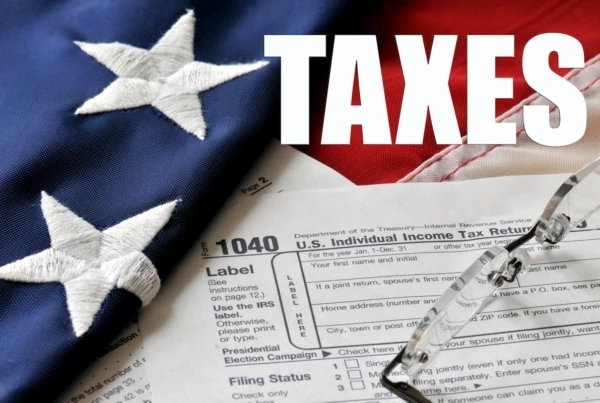How Tax Refund Advances Work
When you offer a homogenous, undifferentiated product or service, you seek alternative marketing promotions for bringing customers through the door. In the case of tax preparation, this could be superior customer service, refund accuracy guarantees, or additional services which might entice a customer to choose your service (or buy the best tax software from you). With the fierce and intensifying competition in the tax return preparation space, some have found another method for building a powerful brand and standing out from the crowd: tax refund anticipation loans. These products offer nearly instant access to cash equivalents (usually in 24-48 hours in the form of a branded debit card) as you wait to receive Uncle Sam’s approval on your tax refund. These products, essentially short-term loans against your anticipated tax refund, provide liquidity until the IRS decides to issue your return. Upon refund issuance, the lender takes the appropriate amount of money to satisfy the loan and extinguish the debt, effectively repaying the loan. Typically, the earlier you file your return, the earlier you will receive your refund. The IRS begins accepting completed tax returns in mid-January, however, in those instances where you claim a refundable tax credit (specifically, either the additional child tax credit or the earned income tax credit), the IRS must, by law, delay issuing these refunds until mid-February. This allows the IRS to take extra precaution when reviewing your return where you claim a refundable credit before issuing a refund. Despite filing early, the average expected delay can range anywhere from 2-4 weeks from filing to receiving a refund. Even by e-filing and requesting direct deposit of your refund, it can still take time to process and issue your refund. Because of this, some companies have sought to trim this time by offering refund anticipation loans. If the 2-4 week time frame does not fit with your cash flow needs, refund advance loans (when used without costs) might prove a useful tool for your needs. To receive a refund anticipation loan, after the tax preparer has identified and reviewed your stated tax refund, a partner lender will originate a loan (usually at a fixed dollar increment not in excess of your refund or as a percentage of your refund). You have access to this line of credit until the IRS issues the refund. When the IRS issues your refund, the lender will claim their amount to satisfy the outstanding loan, with the remainder transferring to the taxpayer. Be aware, often this extra refund comes to the taxpayer through the same payment method as the refund advance loan proceeds. In other words, if you received your refund advance on a prepaid debit card, the tax preparer and lender will issue your excess refund on this same debit card. Continue reading to learn about the advantages and disadvantages of these financial products and weigh whether they make sense for your financial needs.
![Using a Refund Advance to Expedite Your Tax Refund [2022] 2 hour glass waiting](https://youngandtheinvested.com/wp-content/uploads/hourglass-waiting.webp)
-
Refund Advance Loan Advantages
-
Refund Advance Loan Disadvantages
- Early Refund Advance: $200 – $500 available without fees before 2020 with qualified documentation
- No Fee Refund Advance Loans: $200 – $3,200 without fees
- Go Big Refund Advance – $1,000 – $6,400, 2% fee
Available Refund Advance Options
![Using a Refund Advance to Expedite Your Tax Refund [2022] 3 applicable refund advance fees](https://youngandtheinvested.com/wp-content/uploads/applicable-refund-advance-fees.webp)
-
How Much Money Can You Get?
-
Available Annual Percentage Rates (APRs)
-
Applicable Fees
- Jackson Hewitt assesses a fixed 2% origination fee on its Go Big Refund Advance product
- Liberty Tax assesses a fee with an equivalent APR of 35.99%
- TurboTax has no fee on its refund advance product offered through Green Dot Bank
- H&R Block has no fee on its refund advance product offered through Axos Bank
-
Refund Advance Deadlines
-
Form of Proceeds from a Refund Advance (Prepaid Debit, Bank Transfer)
The Bottom Line on Refund Advance Loans
Refund advances can represent useful tools for managing your liquidity. However, they can often come paired with sky-high costs, relative to the short-term loan received. In instances where lenders originate these loans at no cost to you, pursuing a refund advance loan makes perfect sense. The primary limitation in this circumstance comes in the form of how loan proceeds transfer to your care. Debit cards can hinder your access to complete liquidity you might receive from the IRS as a direct deposit, U.S. Savings Bond, or physical check. Review the below online tax software packages or consider visiting your local retail branch for the tax preparers listed. But most importantly, to manage your cash flow better, consider adjusting your tax withholding to get your money throughout the year (as opposed to a refund).TurboTax Review 2020, Packages and List Prices
| Package | Prices & Description |
|---|---|
Free edition | |
Live Basic | TurboTax Live Basic represents the same version above but also offers on-demand video access to a tax professional for help, advice and a final review. |
Deluxe | This version of TurboTax allows you to itemize and claim other tax deductions and credits, as well as includes the "It's Deductible" feature for calculating the value of donated items, should you qualify to itemize. This package lets you file a Schedule C, but you can't report capital gains or rental income on your return. These functionalities require the Premier version below. |
Live Deluxe | TurboTax Live Deluxe represents the same version above but also offers on-demand video access to a tax professional for help, advice and a final review. |
Premier | The Premier package is the Deluxe version plus added capability for reporting investments (capital gains and losses) and rental income. |
Live Premier | TurboTax Live Premier represents the same version above but also offers on-demand video access to a tax professional for help, advice and a final review. |
Self-Employed | Provides all functionality of the Premier version plus added deduction help and expense-tracking features for freelancers, independent contractors and side-hustlers. |
Live Self-Employed | TurboTax Live Self-Employed represents the same version above but also offers on-demand video access to a tax professional for help, advice and a final review. |
H&R Block Review 2020, Packages and List Prices
| Package | Prices & Description |
|---|---|
Free edition | H&R Block's free federal version allows you to file a 1040 and a state return for free, in addition to Schedules 1-3. This is the only free version I reviewed which offers these schedules. This option works for people who don’t have complex filing situations and do not plan to claim any deductions or credits other than the standard deduction, the earned income tax credit or the child tax credit. |
Deluxe | Good option for filers who itemize, though lacks included functionality to handle more complex returns, like those for active investors, landlords or filing a Schedule C-EZ (for freelancers with very simple expenses). |
Premium | The Premium package is the Deluxe version plus added capability for reporting investments (capital gains and losses) and rental income (Schedule D or Schedule E). Independent contractors filing Schedule C-EZ also can use this package. |
Self-Employed | Provides all functionality of the Premium version plus added deduction help and expense-tracking features for freelancers, independent contractors and side-hustlers. This version also imports Uber driver tax information and integrates with the expense-tracking app Stride Tax. |


![Using a Refund Advance to Expedite Your Tax Refund [2022] 1 refund advance loan trapped money](https://youngandtheinvested.com/wp-content/uploads/refund-advance-loan-trapped-money.webp)



